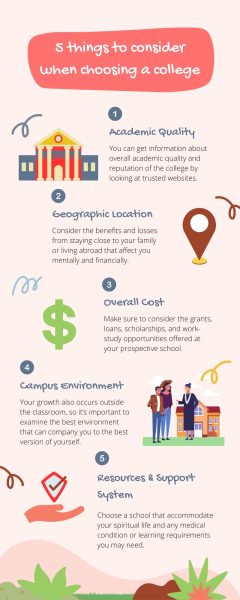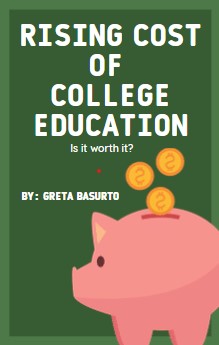In recent years, the cost of attending college each year has become harder and harder for students to justify the rising costs of college. These rising costs are creating a significant financial burden on students and their families, and it has increased even more this year, with many colleges increasing tuition fees by over 10% from the previous year. While some argue that these prices are necessary to maintain high-quality education, college costs are unjustifiable.
 First, let’s address the main cause of rising costs to accessible to higher education. The primary purpose of colleges and universities is to provide students with the knowledge and skills that they need to succeed in their careers. However, when tuition fees continue to rise significantly each year, it’s challenging for many students, especially those with low to middle income situations. As a result, colleges are creating a system where higher education becomes a privilege for the wealthy, rather than a fundamental right accessible to all.
First, let’s address the main cause of rising costs to accessible to higher education. The primary purpose of colleges and universities is to provide students with the knowledge and skills that they need to succeed in their careers. However, when tuition fees continue to rise significantly each year, it’s challenging for many students, especially those with low to middle income situations. As a result, colleges are creating a system where higher education becomes a privilege for the wealthy, rather than a fundamental right accessible to all.
The financial problems are created by huge tuition fees, forcing students to take on loan debt. One of the biggest factors driving students to borrow more for college is the rising cost of attendance at various colleges, plus the cost of room and board. According to recent data, the average student loan debt for graduates is approaching an all-time high, reaching tens of thousands of dollars. This debt not only affects students’ financial stability in the short term but also limits their opportunities in the long run, as they are burdened with loan repayments that can last for decades.
The increasing cost of college puts pressure on students to prioritize finance over their academic growth. Many students are forced to work multiple jobs or even reject valuable internship opportunities. This act between work and study can negatively impact students’ academic performance and mental well-being, sabotaging then, the very purpose of pursuing higher education.
Also, let’s recall that a significant portion of the tuition money often goes towards funding facilities, expanding administrative staff, and other non-academic things that do not directly benefit students’ education. That’s important too, but it should not come at the expense of affordability and accessibility for students.
So, what can be done to address this issue? First, colleges must prioritize financial aid for students. They should be more considerate about tuition fees and try to minimize unnecessary expenses. Additional fees for labs, books and special equipment should be included in the yearly overall cost. This allows students and parents to know exactly how to budget. Families with children serious about attending college would be have the advantage of no hidden fees.
Additionally, governments and policymakers must explore alternative funding models, such as increased innovative scholarship programs, to alleviate the financial burden on students and their families. Colleges should invest in online learning platforms, flexible course schedules, and work-study programs. These measures can help reduce costs and make higher education more accessible without compromising quality.
In conclusion, the cost of college education is a growing concern that demands immediate attention and action. While it’s essential for colleges and universities to maintain high academic standards, this should not come at the point where students can’t pay their loans anymore. By searching different solutions towards the case, colleges can help create a more sustainable higher education system for all. It’s time to make college education accessible and affordable, not just for the privileged few, but for everyone who aspires to pursue their dreams and build a brighter future.







